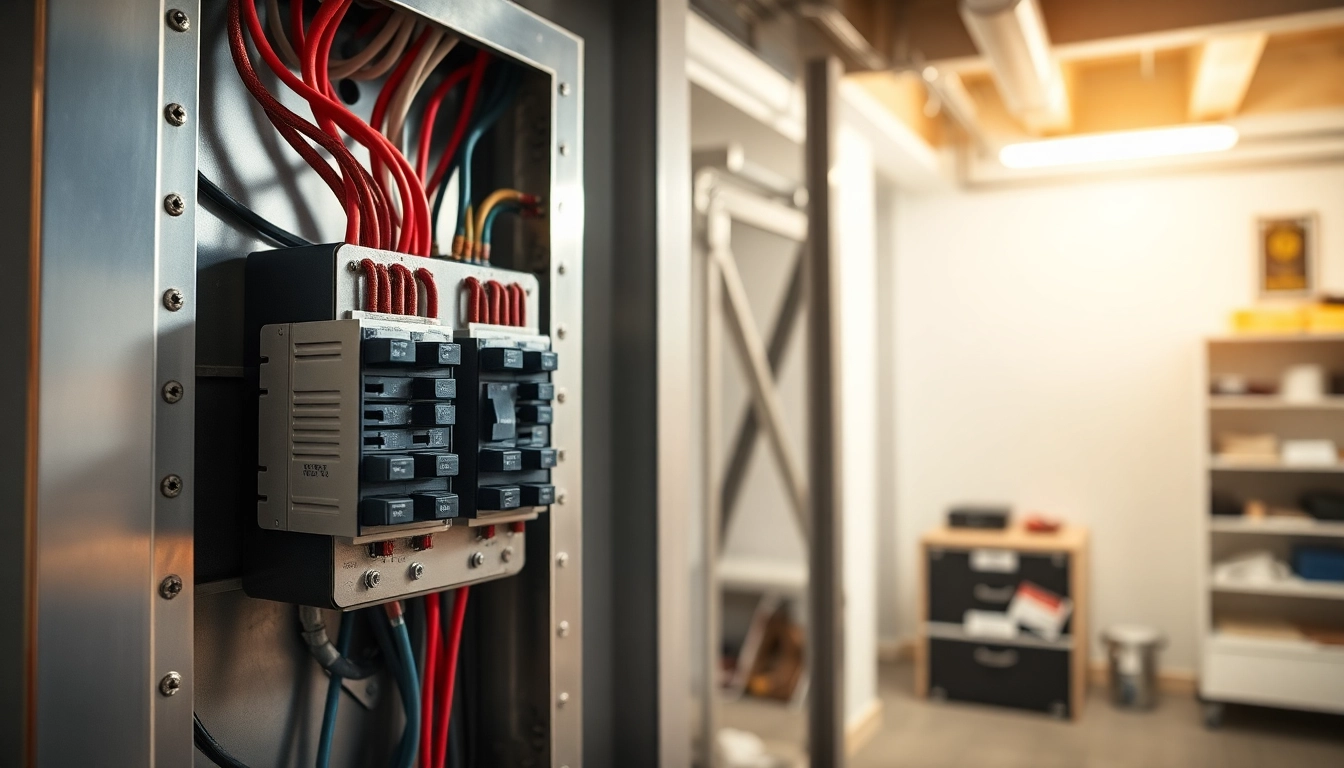1. Introduction to Electrical Panel
The electrical panel is an essential component of your home’s electrical system, acting as the central hub that manages and distributes electricity throughout your property. Often referred to as a breaker box or service panel, it houses several crucial safety devices, including circuit breakers or fuses that interrupt the flow of electricity in case of overloads or short circuits. This article provides a comprehensive exploration of the Electrical Panel, emphasizing its importance, signs that indicate the need for an upgrade, the benefits of making that upgrade, the process involved, and answers to common questions homeowners may have.
1.1 What is an Electrical Panel?
An electrical panel serves as the main distribution point for electrical circuits in your home. It receives electricity from the utility provider and redistributes it to various circuits that feed power to your appliances, lights, and outlets. The panel is equipped with circuit breakers or fuses, which protect the wiring and appliances from overloads by automatically shutting off the circuit when the current exceeds safe levels. Additionally, most electrical panels have a main switch that can turn off all electricity to the house, enhancing safety during maintenance or emergency situations.
1.2 Importance of Your Electrical Panel
The electrical panel is crucial for several reasons. Firstly, it ensures that electricity is delivered efficiently and safely throughout your home. A malfunctioning or outdated panel can lead to electrical failures, causing inconvenience, danger, and potential fire hazards. Secondly, an upgraded panel can accommodate modern appliances and increased electrical loads, particularly in homes that have added significant electronic devices or smart home technologies. Lastly, the condition of your electrical panel is often an important factor during real estate transactions, as prospective buyers look for homes with updated electrical systems to avoid future issues.
1.3 Common Electrical Panel Types
There are several types of electrical panels commonly used in residential homes:
- Main Breaker Panel: The most common type found in homes, featuring a main circuit breaker that controls all sub-circuits.
- Subpanel: A secondary panel connected to the main panel that serves to divide electricity to specific areas of the home.
- Fuse Panel: An older model that uses fuses instead of circuit breakers to manage electrical flow. These are less common today but may still be found in older homes.
- Smart Panels: Advanced panels equipped with technology that allows monitoring of energy consumption, circuit performance, and remote management through smartphones.
2. Signs Your Electrical Panel Needs an Upgrade
Recognizing when your electrical panel may need an upgrade is vital for ensuring safety and efficiency within your home. Here are several signs to watch for:
2.1 Frequent Circuit Breaker Trips
If you find that your circuit breakers are tripping frequently, it is a clear indication that your electrical panel may be overloaded. This can happen when too many devices are drawing power from the same circuit, leading to a potential safety risk. Consistently tripping breakers can mean that it’s time to assess your panel and consider an upgrade to one that can handle your household’s electrical demands more effectively.
2.2 Signs of Damage or Wear
Physical damage to your panel, such as rust, corrosion, or melting, can significantly impair its function and be a precursor to severe safety hazards like electrical fires. Additionally, signs such as a burning smell coming from the panel or flickering lights can signal that the panel is failing and needs immediate attention or upgrading.
2.3 Incompatibility with Modern Appliances
As appliances become more energy-efficient and powerful, your existing electrical panel may struggle to meet their requirements. If you’ve recently installed new appliances, such as electric cooktops, HVAC systems, or charging stations for electric vehicles, and notice that your panel can’t handle the load, upgrading is necessary to ensure operational safety and efficiency.
3. Benefits of Upgrading Your Electrical Panel
Upgrading your electrical panel can provide various benefits that enhance your home’s safety, efficiency, and value. Here are some key advantages:
3.1 Improved Safety Measures
The foremost advantage of an upgraded electrical panel is the significant increase in safety. Modern panels are designed to handle higher electrical loads and come equipped with improved safety features. This reduces the risk of electrical faults, fires, and damage to appliances caused by inconsistent voltage levels. Furthermore, a new panel will comply with current safety standards, which may have changed since your old panel was installed.
3.2 Enhanced Energy Efficiency
New electrical panels can also improve energy efficiency throughout your home. By allowing more efficient distribution of power and accommodating energy-efficient appliances, an upgraded panel can lead to reduced energy bills. Additionally, modern panels often come with smart technology that provides insights into usage patterns, enabling homeowners to make informed decisions about their energy consumption.
3.3 Increased Home Value
Upgrading your electrical panel is a smart investment that can enhance your home’s value on the real estate market. Prospective buyers are more likely to be attracted to a property with a modern electrical system, particularly if it offers higher capacities for electricity use, enhanced safety features, and smart integrations. An updated panel can give you an advantage during the selling process.
4. The Upgrade Process for an Electrical Panel
The process of upgrading your electrical panel involves several key steps. It is a significant undertaking that should ideally be handled by qualified professionals to ensure safety and compliance with local codes.
4.1 Assessing Your Current Electrical System
Before upgrading, it’s essential to evaluate your existing electrical system. This will help you understand your current power requirements and identify any additional needs. A licensed electrician can perform a comprehensive assessment, evaluating the age, condition, and load capacity of your existing panel. They can also analyze the number and type of appliances and devices in your home to recommend the best-fit solution.
4.2 Hiring a Certified Electrician
Once you’ve decided to proceed with an upgrade, hiring a qualified and certified electrician is crucial. They will not only help in selecting the appropriate panel but will also ensure that the installation complies with all safety standards and local building codes. Additionally, a professional can handle any necessary permits and paperwork, making the process smoother and less stressful for you.
4.3 Choosing the Right Panel for Your Needs
Choosing the right electrical panel involves considering several factors, including the total amperage required by your home, the number of circuits necessary, and any special features you may want, such as smart technology. Most residential panels range from 100 to 200 amps; however, larger homes with heavy electricity needs may require panels up to 400 amps. Working with your electrician will help you determine the best panel for your unique requirements.
5. Frequently Asked Questions About Electrical Panels
5.1 How much does an Electrical Panel upgrade cost?
The cost of upgrading an electrical panel can vary significantly based on several factors, including the size of the panel, the complexity of installation, and local labor rates. Homeowners can expect to spend anywhere from $800 to $3,000, which includes both the cost of the new panel and the installation labor. It is advisable to obtain multiple quotes from licensed electricians to ensure you receive a fair price.
5.2 How long does the installation process take?
The installation of a new electrical panel typically takes between 4 to 8 hours, depending on the complexity of the job and the electrician’s experience. However, it could take longer if required electrical work is needed in addition to the panel replacement. Scheduling a consultation with your electrician can provide a more accurate timeline based on your specific situation.
5.3 What maintenance does an Electrical Panel require?
Maintenance for your electrical panel is minimal, but it is crucial for ensuring its longevity and functionality. Regular inspections by a qualified electrician should be conducted every few years, or more frequently if you notice any signs of wear or malfunction. Homeowners can also take preventive measures, such as keeping the panel area free from dust, debris, and clutter, and ensuring proper ventilation to prevent overheating.


